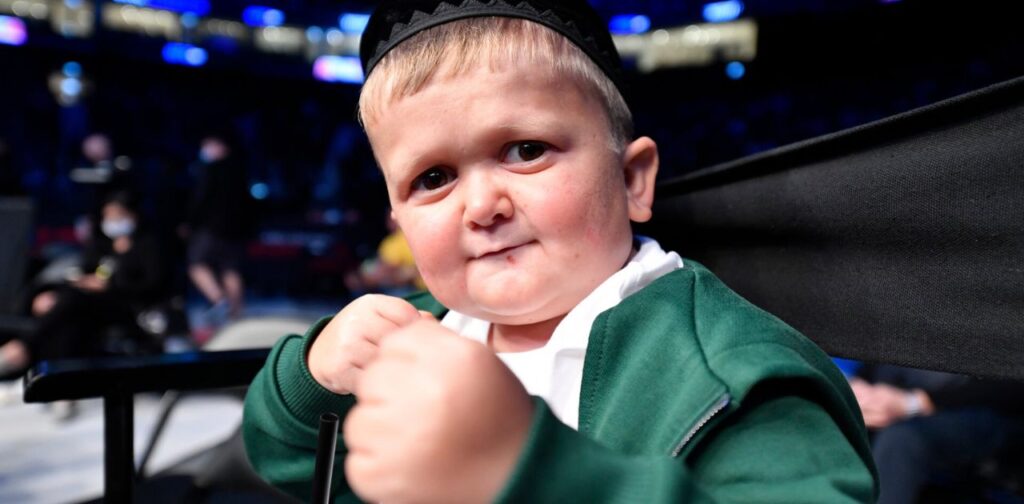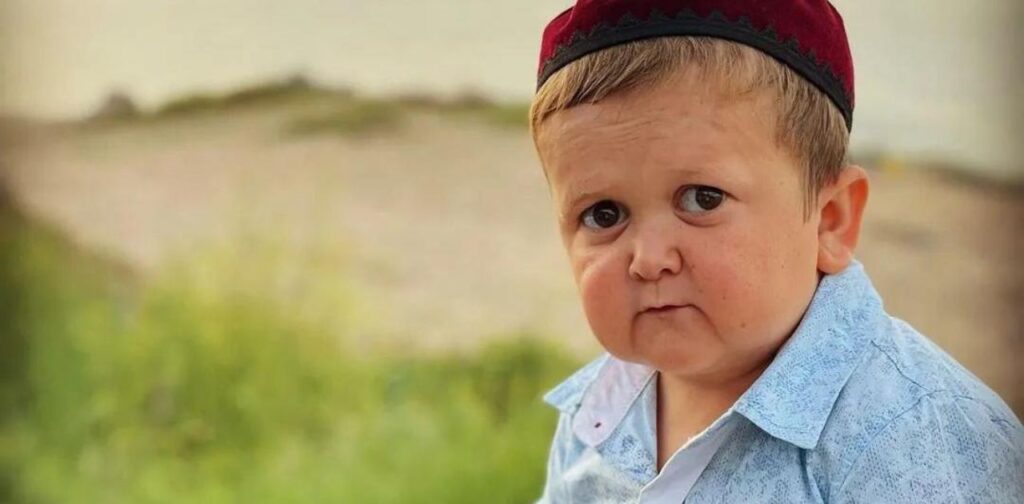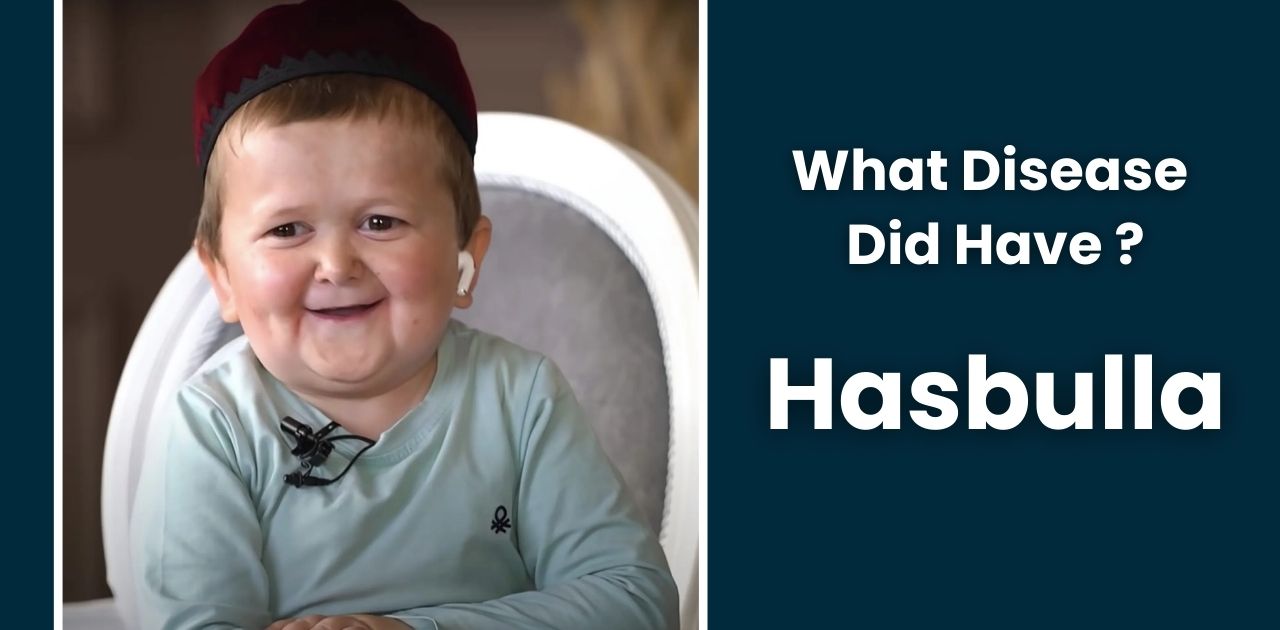In the rapidly evolving landscape of digital media and global entertainment, some stories transcend typical narrative boundaries, capturing worldwide imagination through their extraordinary uniqueness.
Hasbulla Magomedov’s remarkable journey represents precisely such a phenomenon a narrative that intertwines medical complexity, social media dynamics, and profound human resilience.
His emergence as a global icon goes far beyond mere viral content; it represents a powerful testament to how individual differences can challenge societal norms, reshape public perception, and inspire millions across cultural and geographical boundaries.
While most internet sensations fade quickly, Hasbulla has distinguished himself by transforming a rare medical condition into a platform of empowerment, entertainment, and awareness. His story is not just about physical characteristics or medical diagnosis, but about challenging preconceived notions of limitation, potential, and personal identity.
Through his vibrant personality and unapologetic presence, he has effectively rewritten the script on how society perceives medical conditions, turning what might have been perceived as a challenge into a remarkable opportunity for global connection and understanding.
Who Is Hasbulla? The Internet’s Smallest Celebrity

In the vast landscape of social media personalities, Hasbulla Magomedov stands out as a truly unique phenomenon. Hailing from the Republic of Dagestan, Russia, this social media sensation has captured global attention with his extraordinary appearance and vibrant personality. Despite being in his twenties, Hasbulla stands at just 3 feet tall (approximately 91 cm), with a childlike appearance that has intrigued millions worldwide.
Hasbulla’s rise to fame can be traced back to the early 2020s when his humorous videos on Instagram and TikTok went viral. His playful mock fights, charismatic dialogues, and bold personality quickly transformed him from a local internet curiosity to a global social media sensation. What makes Hasbulla truly remarkable isn’t just his size, but his confident and often defiant demeanor that stands in stark contrast to his physical appearance.
Understanding Hasbulla’s Medical Condition: Growth Hormone Deficiency Explained

What is Growth Hormone Deficiency (GHD)?
Growth Hormone Deficiency (GHD), also known as pituitary dwarfism, is a rare medical condition that significantly impacts an individual’s physical development. This disorder occurs when the pituitary gland, a small but crucial organ located at the base of the brain, fails to produce adequate amounts of growth hormone.
Growth hormone plays a pivotal role in human development, stimulating cell reproduction, regeneration, and overall physical growth. When this hormone is produced in insufficient quantities, it can lead to a range of developmental challenges, most notably stunted growth and distinctive physical characteristics.
Root Causes of Growth Hormone Deficiency
The origins of Growth Hormone Deficiency are multifaceted and can be broadly categorized into several potential triggers:
Genetic Factors
- Genetic mutations that disrupt the pituitary gland’s hormone production
- Inherited conditions affecting growth hormone synthesis
- Chromosomal abnormalities impacting hormonal regulation
Developmental Causes
- Improper pituitary gland formation during fetal development
- Congenital malformations affecting hormonal production
- Disruptions in embryonic growth processes
Acquired Conditions
- Trauma to the pituitary region
- Presence of tumors affecting hormone production
- Inflammatory conditions impacting glandular function
Read Also: What Disease Does Neil Young Have?
Recognizing GHD Symptoms: Beyond Hasbulla’s Unique Appearance

Comprehensive Symptom Profile
Growth Hormone Deficiency manifests through a range of distinctive symptoms:
- Short Stature: Significantly reduced height compared to age-related averages
- Delayed Bone Growth: Slower bone maturation process
- Youthful Facial Features: Persistent childlike facial characteristics
- Muscle Development Challenges: Reduced muscle mass and slower physical development
- Potential Hormonal Implications: Broader endocrine system disruptions
Diagnosis of Growth Hormone Deficiency
Medical Investigation Techniques
Diagnosing Growth Hormone Deficiency requires a comprehensive and multi-faceted approach:
Diagnostic Procedures
- Blood Tests: Measuring growth hormone and related hormone levels
- Stimulation Tests: Evaluating pituitary gland’s hormone production capacity
- Imaging Tests (MRI): Examining pituitary gland structure
- Bone Age Tests (X-rays): Assessing skeletal maturation
Specialized Evaluation Methods
Healthcare professionals employ sophisticated diagnostic protocols to confirm GHD:
- Comprehensive medical history review
- Physical growth trajectory analysis
- Hormonal profile assessment
- Genetic screening when appropriate
Treatment Options for Growth Hormone Deficiency

Medical Intervention Approaches
The primary treatment for Growth Hormone Deficiency involves Growth Hormone Replacement Therapy (GHRT):
Treatment Objectives
- Stimulate physical growth
- Improve overall developmental outcomes
- Manage hormonal imbalances
Intervention Techniques
- Synthetic Growth Hormone Injections
- Regular medical monitoring
- Personalized treatment protocols
- Supportive therapeutic interventions
Living with Growth Hormone Deficiency: Hasbulla’s Life

Social Media Fame and Public Perception
Hasbulla Magomedov has transformed his medical condition into a powerful platform for awareness and entertainment. His viral videos and charismatic personality have challenged societal perceptions about medical differences, demonstrating remarkable resilience and self-acceptance.
Psychological and Social Dimensions
Living with Growth Hormone Deficiency presents unique challenges:
- Navigating social interactions
- Managing public perception
- Maintaining personal confidence
- Overcoming potential social barriers
Beyond the Diagnosis: An Inspirational Journey
Hasbulla’s story transcends medical terminology. He represents resilience, challenging stereotypes, and proving that medical conditions do not define an individual’s potential or worth.
Conclusion
Hasbulla Magomedov’s journey with Growth Hormone Deficiency offers profound insights into human adaptability, self-acceptance, and the power of personality. His global popularity demonstrates that differences should be celebrated, not marginalized.
By sharing his story, Hasbulla has not only entertained millions but also raised crucial awareness about rare medical conditions, challenging societal perceptions and inspiring individuals worldwide.
FAQ’s
How old is Hasbulla?
Hasbulla is in his twenties, despite appearing much younger due to Growth Hormone Deficiency.
Why is Hasbulla so rich?
His social media popularity, viral videos, and global internet fame have generated significant income through sponsorships and media appearances.
Can Hasbulla talk?
Yes, Hasbulla can speak fluently and is known for his charismatic and confident communication style.
What is Hasbulla’s medical condition?
Hasbulla has Growth Hormone Deficiency (GHD), a rare condition causing stunted growth and childlike appearance.
Why is Hasbulla so famous?
His unique appearance, humorous content, bold personality, and viral mock fight videos have made him a global social media sensation.
Is Hasbulla a child or a man?
Hasbulla is an adult man in his twenties with a medical condition causing a childlike appearance.
Who is the Russian guy who looks like a baby?
Hasbulla Magomedov, a social media star from Dagestan, Russia, known for his distinctive Growth Hormone Deficiency.
What disease does Hasbulla have?
Hasbulla has Growth Hormone Deficiency (GHD), a rare pituitary disorder affecting growth hormone production.
How does GHD affect Hasbulla’s appearance?
GHD results in short stature, delayed bone growth, and youthful facial features, making him appear much younger.
Is Growth Hormone Deficiency genetic?
GHD can be congenital, caused by genetic mutations or pituitary gland malformations.
Can Growth Hormone Deficiency be treated?
Treatment includes growth hormone replacement therapy, most effective when started in childhood.
What is Hasbulla’s height?
Hasbulla stands approximately 3 feet tall (91 cm), significantly shorter than average adult height.
How does Hasbulla manage his condition?
He has embraced his unique appearance, using social media to raise awareness and build a successful online presence.
Read Also: What Disease Did Ray Liotta Have?











